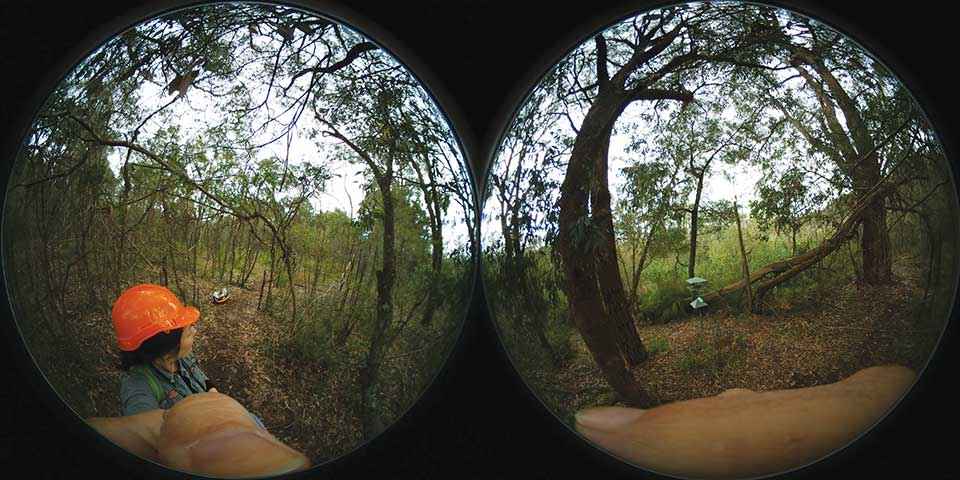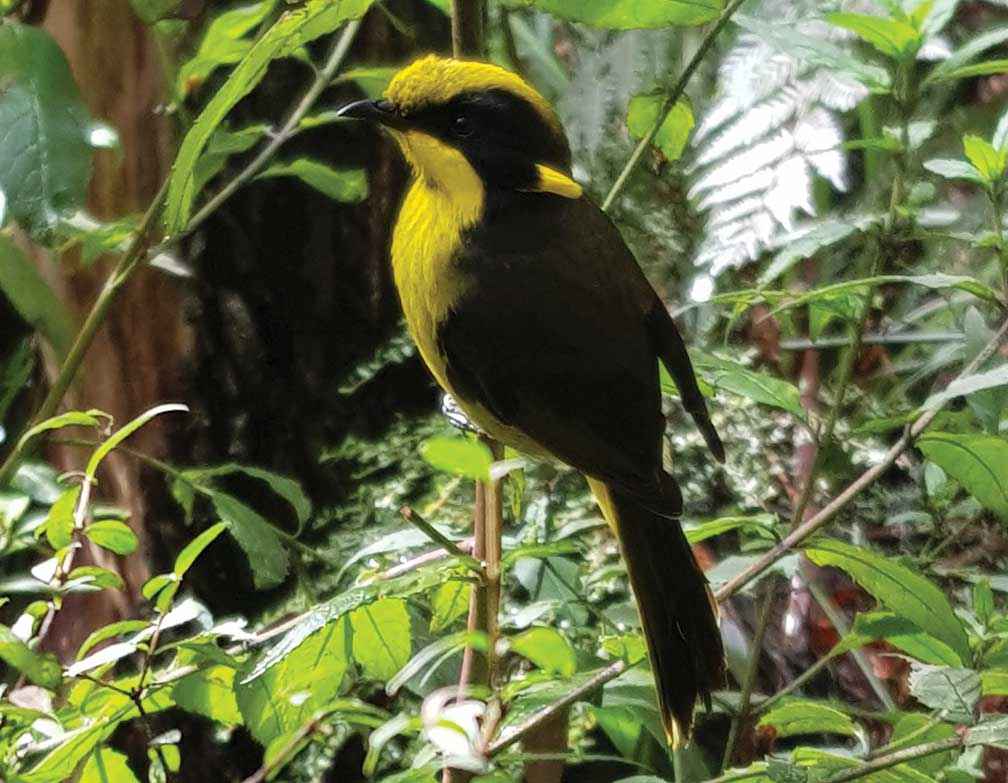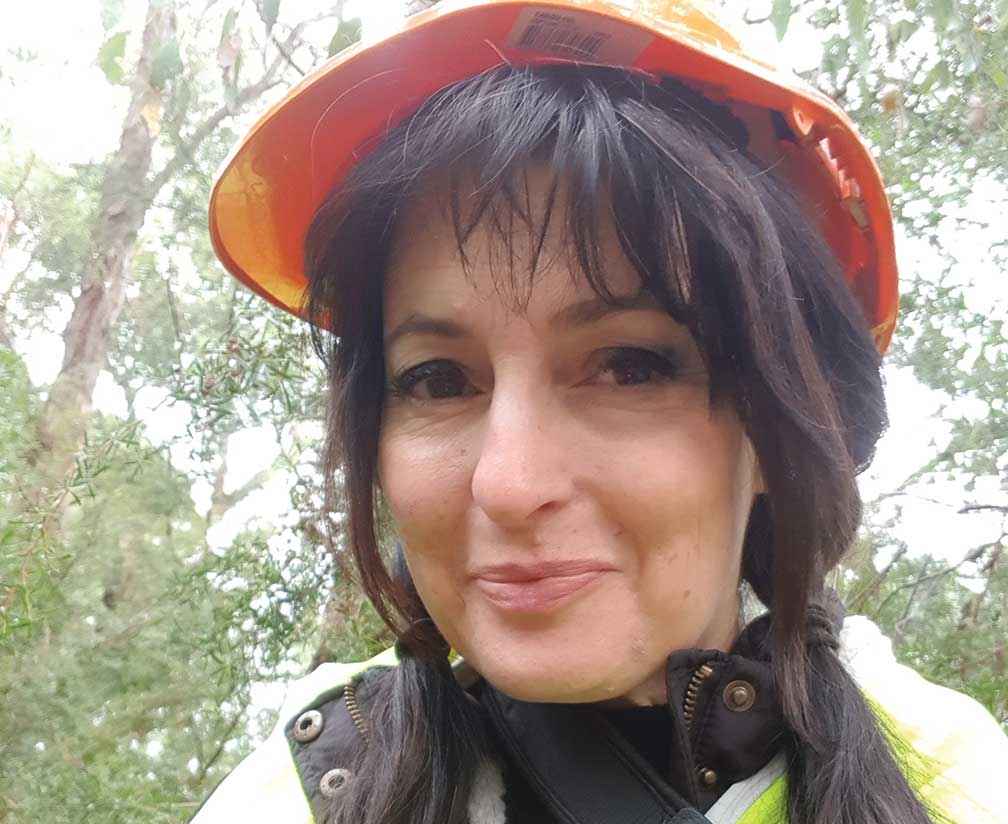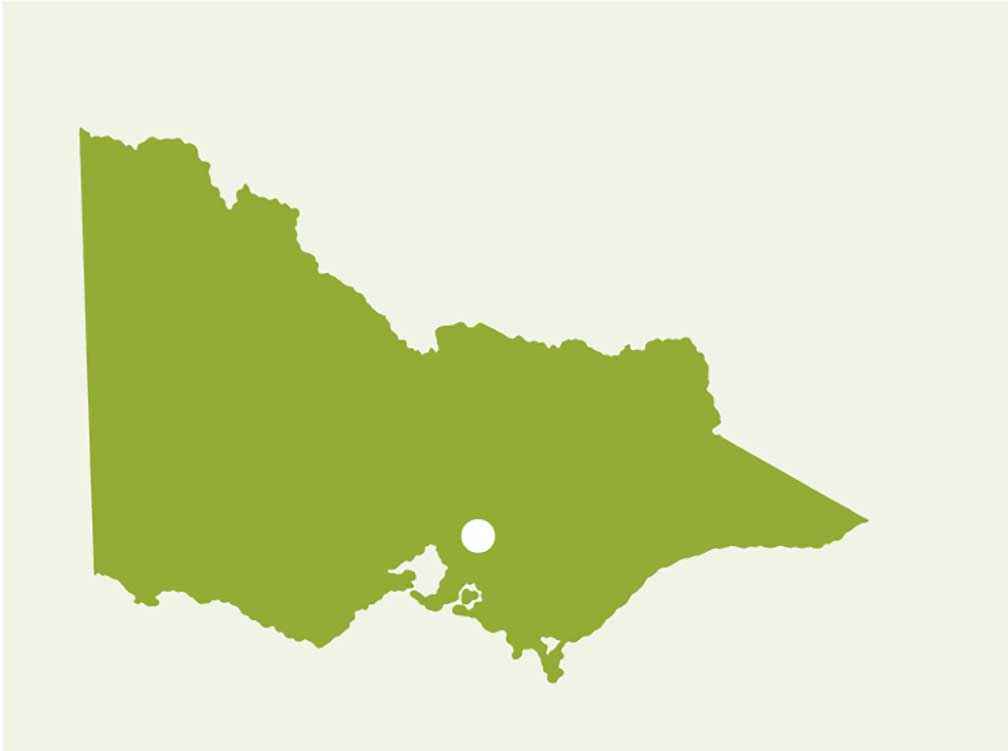Victorian Landcare Magazine - Winter 2019, Issue 75

The helmeted honeyeater is the avifaunal emblem of Victoria.
It is a critically endangered subspecies of the yellow-tufted honeyeater and is a flagship taxon for the health of swamp and streamside vegetation. Threats such as habitat loss and degradation, predation and competition of native and introduced species have resulted in significant declines in the population range and numbers of the species.
Volunteers provide half the daily nectar requirements of the breeding populations.
The Helmeted Honeyeater Recovery Field Volunteer Program has been in operation since 1989. It is working to halt the decline of this bird and establish a sustainable wild population. Volunteers provide supplementary water and feed (wombaroo – a mix of nectar and mealworms) to pairs raising young and to reintroduced colonies of helmeted honeyeaters. Volunteers provide half the daily nectar requirements of the breeding populations.

Above: A helmeted honeyeater at Yellingbo.
Volunteers also observe, monitor and report on any health concerns of the birds to be followed up by management. They provide critical data on species flowering, weed and pest management issues. This is done daily at several sites throughout the Yellingbo Nature Conservation Reserve (YNCR) and generally takes several hours to complete. Several Landcare groups border Yellingbo, including the Monbulk Landcare Group, whose members are actively involved in the program.
Figures from 2018/2019 show this breeding season to be the most successful yet. We are seeing these tiny, rare birds being brought back from the precipice of extinction. I’ve been volunteering in the program for a year. As well as doing the supplementary water and feed work I also work with the ornithologist banding new fledglings and recording data for later studies.

Above: Volunteer Mariea Pacheco provides supplementary water and food to pairs of helmeted honeyeaters raising young.
Here’s what a day in the field looks like:
It’s around 8am as I head to the old ranger’s hut which stands in the reserve amongst scruffy banksias and, manna and swamp gums. I’m bleary eyed and waiting for my second coffee to kick in. The other volunteers who are already mixing, measuring and decanting the life-saving wombaroo liquid into flasks greet me warmly.
We gather all our field equipment together – the buckets of wombaroo, flasks, bowls, cleaning sponges and measuring cup. An emergency transponder backpack, field map, binoculars and compass completes my field kit.
Then, with buckets loaded, we don helmets and hi-viz vests and head out on our different routes through the forest. We have all been expertly inducted and trained by volunteer coordinator, Sue Tardif.
As I trek out to my site I reflect on what makes my fellow volunteers so committed to this work. Working outdoors in all weather can be a challenge. There’s the risk of snakes, wasps and mosquitos. The wombaroo is messy and very sticky. There’s all the paperwork to complete
and the high level of fitness needed to scramble through the Yellingbo bush.
But, as soon as I approach my first feeding station, I get my answer. I am thrilled to see these exquisite birds in their striking yellow and black livery enjoying breakfast. It’s magical to see the honeyeaters flitting about in the tree canopy with the early morning sunlight filtering through.
As I’m pouring wombaroo into bowls I come across a very bold and determined agile antechinus in my bucket! He’s after the sugary mixture of course and despite being tipped out, hops straight back in as soon as I resume pouring. Several wallabies are watching this from nearby.
When I head back to the stony track I notice a bird foraging on the ground ahead. I lift my binoculars and realise it’s a rare and beautiful blue winged parrot. I also spot a white-throated treecreeper. My twitcher skills are improving from working with keen birders and our Senior Scientist Ornithologist, Bruce Quin who oversees the field program.
After a few hours of work I walk out of the forest with a noticeably lighter bucket. The trees are bathed in a golden autumnal haze.
It seems to me that volunteers might be saving this special bird, but in many ways these birds are also saving us!
A 2019 survey of 61 volunteers conducted by the Friends of the Helmeted Honeyeater’s Committee saw them list what they most enjoyed about the program. In order of enjoyment they were: being in a natural environment, feeling they are contributing to conservation, and social connections and friendship.
In 2016-2017 the UK WildLife Trust and University of Essex undertook a study of the health and well-being impacts of volunteering for wildlife conservation. The study involved 139 individuals aged between 18-76. Changes in participants’ attitudes, behaviour and mental wellbeing were assessed over twelve weeks.
The results showed higher levels of physical activity as well as enhanced levels of positivity were recorded after the volunteering experience. Participants also maintained a much greater level of contact with woodlands, reserves and parks.
The qualitative findings asked people how the experience had changed their feelings about themselves. All of the participants reported a much-reduced sense of isolation and increased feelings of belonging and of being part of community.

Above: Yellingbo